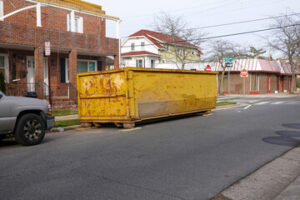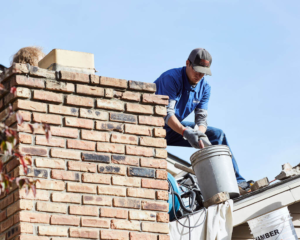Handyman Naperville IL can be hired for various tasks, from fixing leaky faucets to renovating kitchens. They usually have experience and access to all the tools they need for the job, which saves homeowners money.
Many handypersons are self-employed, but others specialize in specific areas of expertise. To improve their skills, they can also become certified in certain trades.

A fish tape is a length of wire that helps a handyman guide cables through walls and tight spaces. It can be made of steel or fiberglass and comes in a range of lengths. Its main function is to allow the insertion of wires through walls without disturbing existing wiring. The tape can be used to feed electrical, plumbing or even voice/data/video cabling. It is also useful for reaching behind cabinets and in closets.
A good quality fish tape should have a sturdy metal core, high-quality fiberglass construction and a round shape that allows for a curved path through walls. It should also be durable enough to withstand repeated use, especially for professional electricians who often work on large projects and need to rewind their fish tape frequently. Moreover, the head of the fish tape should be firmly attached to the wire and should not come loose during use. A handyman should always wear gloves when handling fish tapes to prevent cuts and scratches.
Besides the material, a fish tape’s diameter, flexibility and ease of handling are also important factors to consider when choosing one. Those who regularly work in confined spaces or around live circuits should choose a non-conductive fish tape. These are safer than metal tapes because they do not introduce the risk of a short that could injure a professional or cause property damage.
There are various kinds of fish tapes on the market, ranging from basic stainless steel to high-end models with a variety of tips and leaders. The best choice depends on the specific task and personal preference. For example, a simple mid-length blued steel fish tape can work well for most residential jobs. For those working in environments where energized circuits are present, it is a good idea to opt for a higher-end model.
Before using a fish tape, the user should carefully inspect the area to ensure that it is free of electricity. Many accidents happen when users try to bind wires with duct tape while the power is still running. The simplest way to avoid this is by turning off the power at the circuit breaker and double-checking the voltage with a tester before applying the tape. Handymen should also make sure that their work areas are clean of any debris and that they do not touch any live wires.
Electrical tape
Electrical tape is a type of pressure-sensitive tape that’s designed to insulate wires and other materials that conduct electricity. It’s available in a wide range of sizes, colors, and thicknesses. Using the proper type of electrical tape will help you complete your projects safely and effectively. It’s also important to properly seal the ends of the tape to prevent it from unraveling.
Unlike general-purpose tape, electrical tape is made to adhere tightly to the surface of wires and connections. Its adhesive properties and insulating properties make it an essential tool for Handyman jobs. However, it is important to remember that this type of tape is not designed to completely block all electricity. It is intended to keep low-voltage currents contained and protect against electric shocks, but it should not be used on high-voltage wires or in situations that could create a fire hazard.
In addition to protecting against electric shocks, electrical tape also provides insulation and protection for wires and connections. It can be used to repair damaged insulation on electrical wires and to colour-code them for easy identification. It can also be used to secure loose wires, preventing them from moving around and causing short circuits.
If you’re a handyman, it’s important to use the right types of tools for your job. Electrical tape is a must-have for any home improvement project, but it’s important to choose the right one for your needs. Choose a tape with a minimum and maximum temperature rating to ensure it can withstand the environment in which it will be used.
You can find several different kinds of electrical tape online or in stores. Some are rated for high temperatures, while others are designed to resist moisture and corrosive environments. Some are even rated for cold weather conditions, making them ideal for outdoor installations. When choosing the right electrical tape, read the labels carefully and select a model that is CSA and UL approved. Also, be sure to purchase the correct size and color for your project. Finally, it’s important to properly apply the tape to the surface where it will be placed.
Tape measure
A tape measure is one of the most important tools for any handyman to have. It measures the length of materials and is often used for determining angles. It is also helpful for locating electrical wiring and plumbing. Unlike a ruler, a tape measure is flexible and allows for more accurate measurements. Its markings are typically divided into both metric and imperial units, and it can be used to measure the distance between two points. A handyman should always remember the carpenter’s maxim “measure twice; cut once.” Having a tape measure in your toolbox can help you save time and effort.
The most basic type of tape measure is the standard tape measure, which has a flexible blade that can be used to mark and measure lengths. This type of tape measure has a small hook at the end of the case, and it usually has both imperial and metric measuring markings on its edge. It also has a locking mechanism that prevents the tape from retracting while you are making a measurement. The tape measure’s case is made of plastic or metal, and it is often designed to withstand the rigors of a job site.
When using a standard tape measure, it is essential to understand how to read the increments and the fractional markings. The biggest marking on a standard tape measure is an inch mark, followed by half-inch marks, then 1/4-inch and 1/8-inch marks. Some tape measures even have tiny 1/32-inch marks, although these are not common in use.
Moreover, it is critical to know how to retract the tape measure properly. It is tempting to let it snap back into its case at full speed, but this can damage the internal recoil mechanism over time. Instead, a gentle approach is best. Guide the tape measure back into its case slowly, avoiding kinks or tangles. This not only protects the tape measure, but it will also keep your fingers safe from getting caught in the mechanism.
Another tip for using a tape measure is to check the hook regularly. The hook, sometimes called the tang, is a small piece of metal loosely fastened to the end of the tape measure. If you look at the hook on a quality tape measure, you will notice that it moves slightly in and out, which compensates for the thickness of the tape. This movement is not a defect, but rather an indication of the precision built into a quality tape measure.
Tape knife
Handymen are often required to work with drywall, and that requires them to have the right tools for the job. A tape knife is a tool that has a wide blade for spreading joint compound, also known as mud, over drywall seams. It’s ideal for a variety of tasks, including patching holes, smoothing wall-coverings, and creating specialty artistic wall finishes. The handle on the knife is offset to allow clearance for fingers. It’s available in several widths, from five inches to 12 inches, and in a range of materials, including metal, wood, or plastic.
The different types of taping knives are intended for distinct purposes, though they can be used interchangeably in a few cases. For example, a putty knife can replace a taping knife when you’re working with tight spaces, like inside corners (though a specially designed corner trowel is more effective for this task). A flexible putty knife has a thinner blade and a wider shape than a tape knife. It is ideal for scraping old paint and wallpaper, as well as spreading spackle.
Smaller knives (2” to 4”) are best for the initial application of mud, and larger ones (6” and greater) are used for finishing. Larger knives can smooth and feather mud tracks, as well as leave a clean surface at the end of a taping job.
When you’re using a smaller knife, apply mud to the entire surface of the seam and press it tightly against the tape. Then, use a 6-in. knife to spread a second coat of mud over the first, feathering it out farther from the seam to create a smooth transition between the tape and the surrounding drywall.
For larger jobs, a banjo or clincher can help speed the process by dispensing mud directly onto drywall seams and corner beads. These tools aren’t necessary for small jobs, however, and you can usually do a good taping job by hand. Just be sure to mix your mud thick so it sticks properly. And remember, the bigger the knife, the more mud you’ll need to apply in order to achieve a smooth finish.








